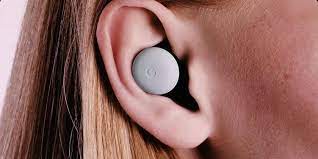COPENHAGEN, Denmark – A significant stride in diabetes management has emerged from a collaborative effort between researchers in Denmark and Germany. A team at RSP Systems, working alongside colleagues from the Institute for Diabetes Technology and the University of Munich, has developed a non-invasive glucose monitoring (NIGM) system that drastically reduces the calibration period, offering a more convenient and less painful alternative to traditional blood testing.
The researchers, whose findings were published in the journal Scientific Reports, utilized Raman spectroscopy to glean blood glucose levels through the skin. This method, while promising, has historically faced challenges related to signal clarity and lengthy calibration processes, often requiring weeks of data collection.
In their groundbreaking study, the team introduced an individualized pre-trained calibration model, significantly streamlining the calibration process. By implementing this model, they successfully reduced the calibration period from weeks to just two days, requiring only 10 measurements.
The efficacy of the new system was evaluated in a clinical setting involving 50 volunteers with type 2 diabetes. The results were compared against those obtained from conventional blood glucose testing methods, demonstrating encouraging levels of accuracy. This advancement holds immense potential for individuals managing diabetes, particularly as the prevalence of type 2 diabetes continues to rise globally due to sedentary lifestyles and unhealthy dietary habits.
Traditional glucose monitoring, which involves frequent finger pricks, can be painful and inconvenient. The development of a non-invasive, wearable device capable of continuous monitoring represents a significant improvement in patient care.
“This reduction in calibration time is a major step forward,” stated Anders Pors, lead author of the study. “Our pre-trained model allows for a much faster and more user-friendly experience.”
The researchers are now focused on further refining the device, aiming to miniaturize it for portable, continuous monitoring. They believe that this technology has the potential to revolutionize diabetes management, providing patients with a more comfortable and efficient way to monitor their glucose levels.
The study, “Calibration and performance of a Raman-based device for non-invasive glucose monitoring in type 2 diabetes,” was published in Scientific Reports (2025). DOI: 10.1038/s41598-025-95334-x.
Disclaimer: This article is based on information provided in the given text. While the research shows promising results, further clinical trials and regulatory approvals may be necessary before this device becomes widely available. Readers should consult with their healthcare providers before making any changes to their diabetes management routines.












